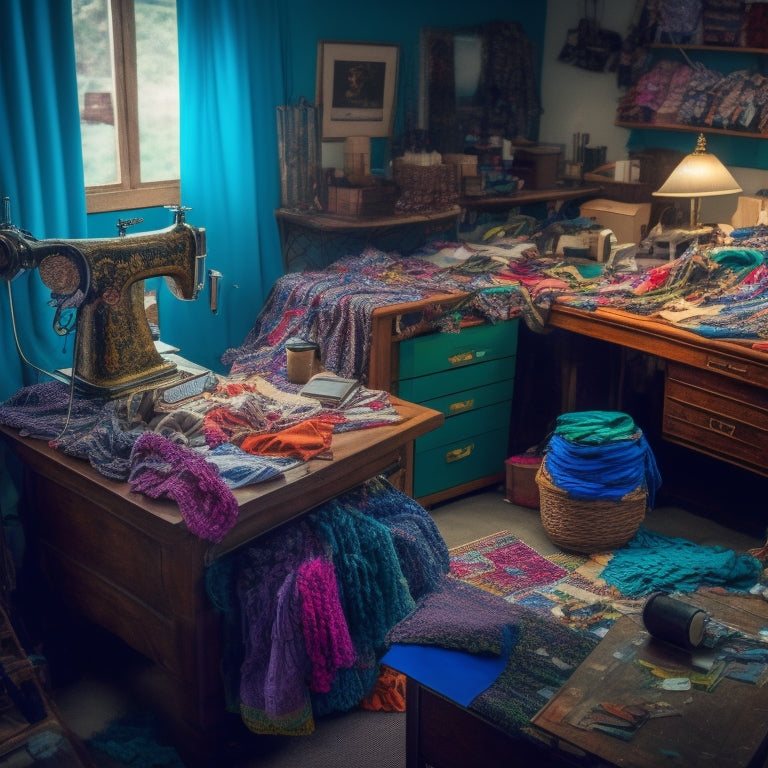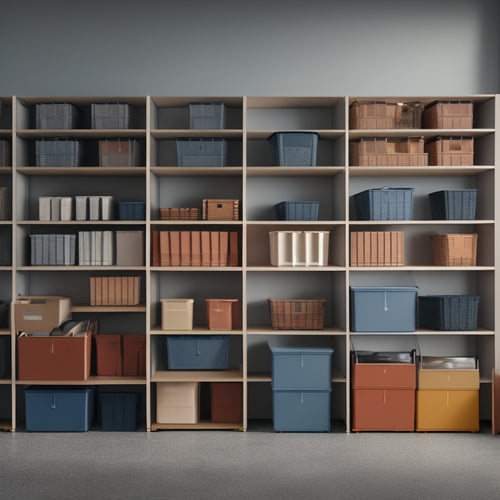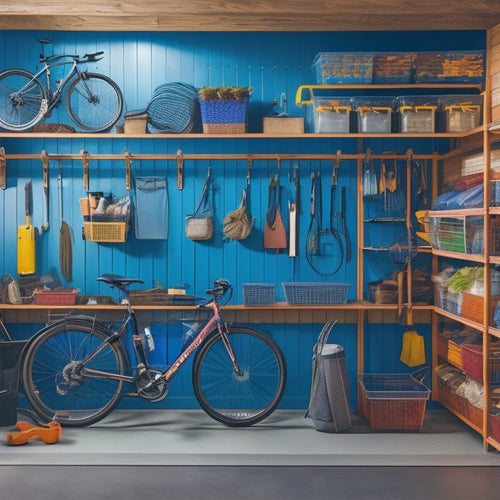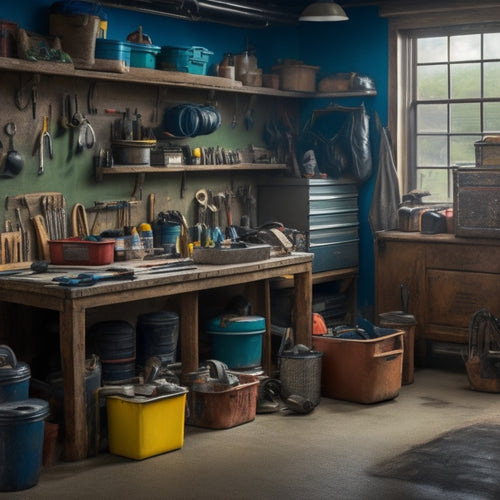
Gertie's Blog: Mastering Sewing Room Chaos
Share
I've been there too - wasting hours searching for lost fabrics, threading needles, and tripping over scattered supplies in my chaotic sewing room. But I've learned some game-changing strategies to tame the chaos. I separate my fabrics into categories, like linens and cottons, and organize them by dominant color. I also use precise folding techniques and color coding to maximize storage space. With creative storage solutions, like pegboards and labeled bins, I can finally find what I need in seconds. Now, I'm more focused on sewing than searching - and you can be too. Let's get started.
Key Takeaways
• Organize fabrics by category, then by dominant color, and use precise folding for maximum storage space and easy location.
• Implement color coding for threads, fabrics, and notions to simplify identification and pairing, and store similar items together for efficient task focus.
• Utilize a variety of storage solutions, including bins, pegboards, and shelves, to maintain a clutter-free sewing room and boost productivity.
• Establish regular decluttering and cleaning schedules to maintain the sewing room's organization and functionality over time.
• Incorporate creative storage ideas, such as fabric display systems and labeled pattern boxes, to elevate the sewing room's visual appeal and functionality.
Fabric Organization Essentials
I separate my fabrics into distinct categories, including linens, cottons, wools, and silks, to create a solid foundation for my fabric organization system.
Within each category, I organize by dominant color, ensuring a harmonious palette.
Fabric folding is key to maximizing storage space, so I use a precise folding technique to prevent wrinkles and creases.
To further refine my system, I implement color coding, grouping similar hues together. This approach allows me to quickly locate specific fabrics and inspires creativity when pairing colors.
Storage Solutions for Success
Utilizing a variety of storage solutions is essential to maintaining a well-organized sewing room. It enables easy access to supplies and tools while keeping the workspace clutter-free. I implement container organization by categorizing supplies into clear bins, labeled with colored Sharpies for easy identification.
Color coding is also a game-changer, allowing me to quickly locate specific threads, fabrics, or notions. Pegboard storage is another favorite of mine, as it keeps frequently used tools and patterns within arm's reach. By storing similar items together, I can focus on the task at hand rather than wasting time searching for misplaced supplies.
With these storage solutions in place, I can confidently tackle any sewing project that comes my way.
Creative Storage Inspiration
Beyond basic storage solutions, implementing creative storage ideas can elevate your sewing room's functionality and visual appeal, making it a space that sparks inspiration and joy.
One of my favorite creative storage ideas is a fabric display system, where I store my fabrics in color-coordinated bins, making it easy to find the perfect fabric for my next project.
For pattern organization, I use labeled boxes, categorizing them by size and gender. This system allows me to quickly find the pattern I need, saving me time and reducing frustration.
Overcoming Organization Challenges
Despite my best efforts to maintain a tidy space, I often struggle with clutter accumulating after completing a project. I've learned that establishing a system to accommodate ample sewing supplies within a limited space is essential to overcoming this challenge.
To stay on top of organization, I've developed some key strategies. Here are a few:
- Implement decluttering techniques like regular clean-outs and categorizing supplies to prevent clutter buildup.
- Utilize time management strategies like setting aside dedicated time for organization and tidying up as I go.
- Maximize space with space-saving tips like using vertical storage and compact containers.
- Develop organization hacks like labeling and categorizing supplies for easy access.
- Prioritize maintenance by scheduling regular organization sessions to maintain a sense of control and calm in my sewing room.
Aesthetics and Efficiency
As I've honed my organization skills, I've come to realize that a well-designed sewing room not only boosts productivity but also sparks creativity and joy.
Aesthetic appeal plays a significant role in creating an efficient workspace. I achieve this by maintaining a clean and clutter-free environment, which allows me to focus on my projects. Vertical storage options like shelves and pegboards help maximize space, keeping tools and supplies within easy reach.
This efficient setup enables me to work seamlessly, reducing stress and increasing motivation. By incorporating personal touches, such as artwork and framed pictures, I create a pleasant atmosphere that inspires creativity.
Frequently Asked Questions
How Do I Maintain Organization in a Small Sewing Room With Limited Storage?
"I tackle small sewing room organization by utilizing space hacks like vertical shelves and maximizing hidden storage. I implement a labeling system for supplies and fabric, ensuring everything has a designated spot, making it easy to maintain order and focus on creativity."
Can I Use IKEA Furniture to Create a Functional Sewing Space?
I transformed my tiny sewing nook using IKEA's affordable MALM dressers and KALLAX shelving units, implementing budget hacks like repurposing storage bins as pedestals and utilizing vertical space for peak functionality, making space planning a breeze.
What Are Some Eco-Friendly Alternatives to Plastic Storage Bins?
I swap plastic bins for repurposed containers like wicker baskets, wooden crates, and vintage suitcases, and opt for natural textiles like jute and hemp storage bags to create an eco-friendly, visually appealing sewing space.
How Often Should I Purge and Refresh My Sewing Supplies and Fabric Stash?
I address stash guilt and fabric fatigue by scheduling bi-annual purges, donating gently used items, and replenishing my supplies with intentional, eco-friendly purchases that spark inspiration and align with my current projects and style.
Are There Any Phone Apps or Digital Tools to Help Track Fabric Inventory and Patterns?
I leverage tech to tame my fabric stash by using apps like Fabric Scanner, which catalogs my inventory with photos and notes, and maintain a Digital Library of patterns, ensuring I can easily locate and utilize my resources.
Related Posts
-

Choosing the Right Stacked Storage Bins
When choosing the right stacked storage bins, you'll want to evaluate your storage needs, considering inventory types...
-

Garage Wall Storage Ideas to Boost Productivity
You can enhance your garage's productivity by capitalizing on your ceiling height with overhead racks, storing bulky ...
-

Best Cheap Tool Boxes for Budget-Conscious Buyers
You need a reliable tool box that gets the job done without breaking the bank. Look for durable materials, rust-resis...


